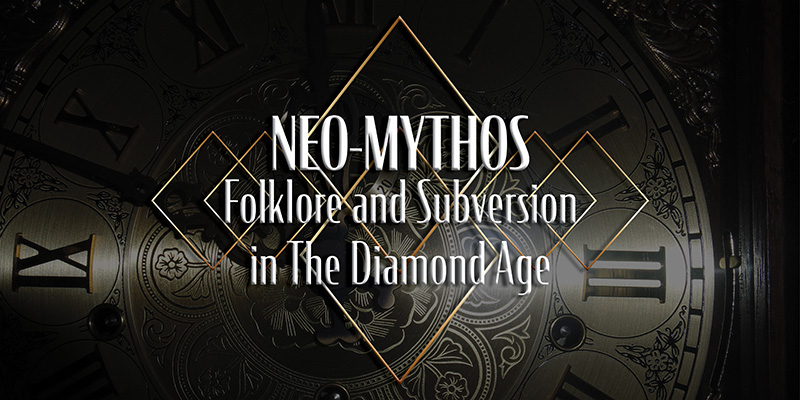Full Title: “Neo-Mythos: Folklore and Subversion in Stephenson’s The Diamond Age: or, A Young Lady’s Illustrated Primer”
Conference: Far West Popular Culture Association (FWPCA/ACA)
Location: Las Vegas, NV
First Presented: March 12, 2011
Original Abstract
Neal Stephenson’s engrossing novel, The Diamond Age, is both a future vision of Earth swarming in nanotechnology and also a bildungsroman of a little girl becoming a fairytale Princess. By focusing on the subversive qualities of folklore, this paper seeks to examine how Stephenson attempts to destabilize the Victorian concept of idealized femininity venerated in Dickens’ The Old Curiosity Shop while he simultaneously seeks to reaffirm conservative Neo-Victorian values. The primary question this paper attempts to answer is whether Little Nell actually functions as a subversive agent within The Diamond Age or is she little more than an indoctrinated puppet in Stephenson’s harsh critique of contemporary society.
Addendum
Of Neal Stephenson’s novels, I like the shortest: The Diamond Age and Snow Crash. This paper is one of two I wrote on the former and, if I can find a solid topic, I will definitely write one or more on the latter. These two texts continue to interest me for a number of reasons.
First, they mix linguistics, philosophy, and technology in a unique way. While far from scholarly, they operate like a thought experiment. Each novel explores a set of specific concepts with characters, plot, and technology rather than focusing solely on one character’s inner turmoil or the political machinations of some external entity. Do not get me wrong, Mrs. Dalloway and The Expanse series are excellent and have their place, but they are not metaphysical quandaries made manifest in fiction.
Second, both novels contain an interesting blend of parody and pastiche. Stephenson mocks the sub-genre of cyberpunk in Snow Crash while also celebrating it through his self-conscious imitation of its style, themes, and tropes. The Diamond Age imitates The Old Curiosity Shop to impressive effect, as my paper discusses to some degree, while the novel also leverages a variety of other works in its exploration of political theory and age-old philosophical questions such as nature vs nurture.
Finally, the novels are tighter and more streamlined stories than his other works. His later works like Seveneves and Anathem are unnecessarily long and wordy. They still cover some extremely interesting topics and theoretical issues, but those concepts are lost in a flood of words. Seveneves is particularly egregious in this regard—it actually repeats sections of itself repeatedly. More careful editing and excision would have made both works stronger without losing the flow of their focus.
As for my paper, it is quite the opposite. It should have been longer. There is nothing inherently wrong with the topic, it’s just not well-articulated in this short paper. The original concept was to argue that Stephenson did not simply re-imagine Charles Dickens’ The Old Curiosity Shop with a happy ending in a far flung future, but he purposefully superimposed fairytale elements and conventions over the narrative to called attention to the fairytale quality of Dickens’ work as well as our own desire for a positive resolution.
Obviously, a work of literature should do something more than simply fulfill the wishes of the audience. Dickens enrages readers of The Old Curiosity Shop even today because he killed Nell Trent. However, I find that most readers are not angry with this novel because of the unhappy ending. Rather, it is because Little Nell’s death appears forced by the writer rather than a logical outcome of the narrative.
While many rightly criticize a Deus ex machina conclusion, since it demonstrates a writers inability to extricate themselves from their twisted plotting, Dickens’ did quite the opposite The Old Curiosity Shop. This is not a contrived happy ending, but a contrived sad ending. Charles Dickens was still mourning the loss of his niece Mary and he crafted this novel as a tribute to her untimely and, as he surely felt, unwarranted early death.
Untimely and unwarranted perfectly summarize Nell Trent’s death. She did not have to die and she did not have to die just before she could have been saved, but she did. This is why her death is both sad and laughable as Oscar Wilde suggested. Her death is forced and Dickens’ does not hide that fact from the reader. He makes it perfectly plain he could have saved her as the god of his textual world, but did not. The readers are left wondering and angry like Dickens was at the death of his niece, Mary.
